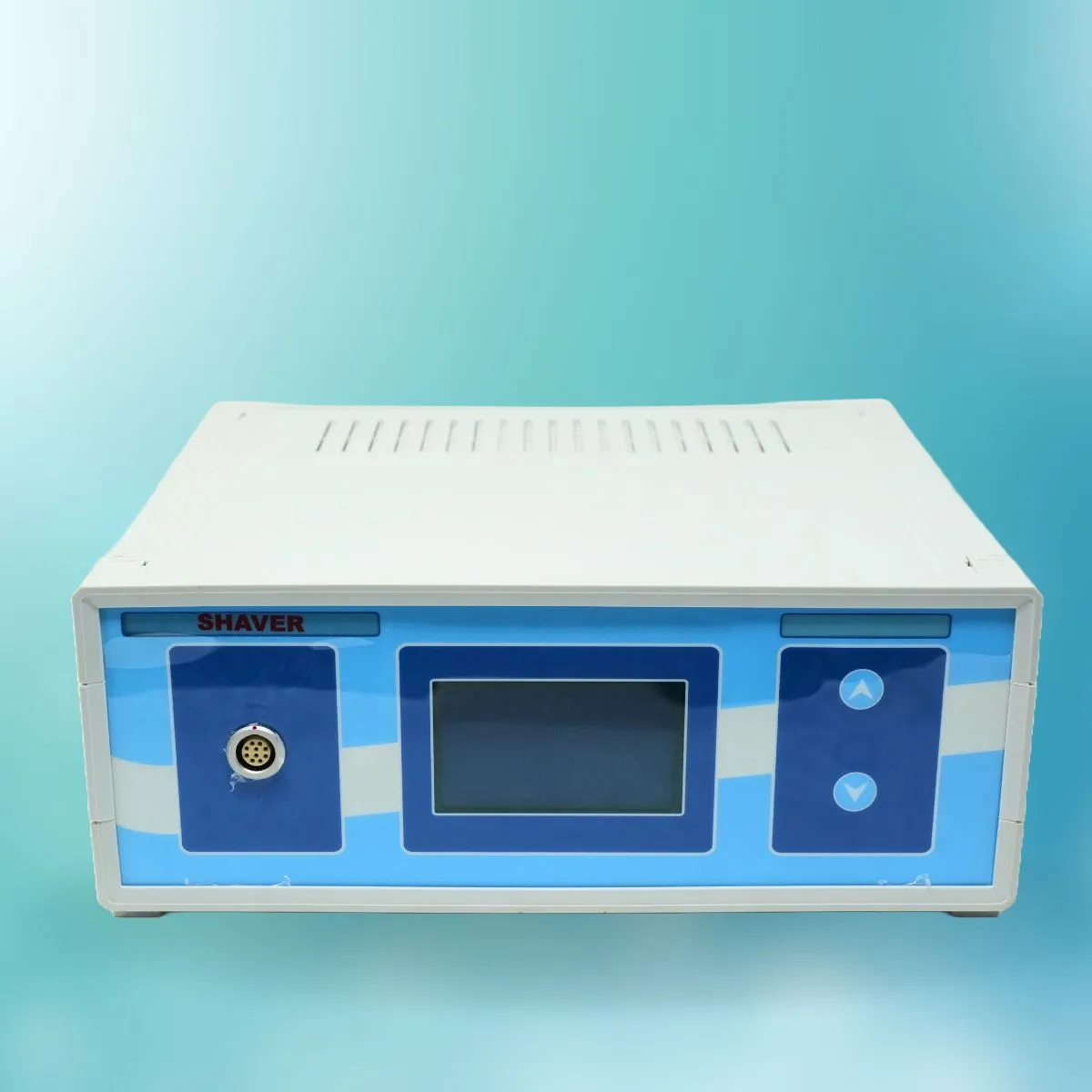SHAVER SYSTEM MINI
Description
A mini shaver system in orthopedics is a specialized, smaller version of the standard shaver system, designed specifically for use in arthroscopic procedures involving tight or confined joint spaces. It provides surgeons with the precision and control needed to remove or trim damaged soft tissues, such as cartilage, meniscal tissue, or synovial membrane, in joints where access is limited, such as the wrist, ankle, or smaller knee areas. The mini shaver system is equipped with a smaller handpiece and interchangeable blades, which allow for fine tissue manipulation in delicate areas without causing harm to surrounding structures.
Key Components of a Mini Shaver System:
-
Mini Handpiece: The mini handpiece is ergonomically designed to provide precise control in smaller, more confined spaces. It is lightweight and easy to maneuver, allowing the surgeon to perform detailed procedures with accuracy.
-
Rotary Mechanism: Like the full-sized shaver system, the mini shaver is powered by a motorized rotary mechanism, which enables the blades to rotate at high speeds. This motorized function allows for efficient cutting and removal of soft tissue, making the procedure faster and reducing the overall surgical time.
-
Interchangeable Blades: The mini shaver system uses specialized, smaller blades that are ideal for delicate, limited areas within joints. These blades are designed to remove damaged tissue with precision, providing smooth and controlled tissue resection.
-
Suction Mechanism: Integrated suction is a key feature of the mini shaver system. It helps remove debris, fluids, and tissue fragments created during the procedure, ensuring that the surgical field remains clear and enhancing the surgeon's visibility.
-
Irrigation System: The system is often equipped with an irrigation function that flushes saline or other solutions into the joint. This helps maintain a clear view, reduces the risk of debris buildup, and keeps the joint tissues moist during the procedure.
Mechanism of Action:
The mini shaver system operates similarly to a standard shaver but is specifically designed for use in smaller, tighter joint spaces. The rotating blade cuts, trims, or shaves away damaged or diseased tissue with minimal invasiveness. As the tissue is removed, the suction mechanism clears away the debris, keeping the area clean and visible for the surgeon.
Applications in Orthopedic Surgery:
-
Small Joint Arthroscopy: The mini shaver system is especially useful in arthroscopic surgeries involving smaller joints such as the wrist, ankle, and smaller regions of the knee or shoulder, where space is limited for larger instruments.
-
Meniscal Tear Repair: In knee arthroscopy, the mini shaver can be used to remove frayed or damaged portions of the meniscus, helping with meniscectomy or meniscal repair procedures.
-
Cartilage Debridement: The mini shaver is also used in cartilage procedures to debride damaged or degenerated cartilage, especially in smaller or more confined joint spaces, to promote joint healing and reduce pain.
-
Synovial Tissue Removal: In cases of synovitis, the mini shaver system is used to remove inflamed synovial tissue from joints, improving function and reducing pain caused by inflammation.
-
Soft Tissue Management: The system can be used for trimming or removing damaged soft tissues, such as tendons or ligaments, in smaller joint surgeries or complex joint procedures.
Advantages of the Mini Shaver System:
-
Minimally Invasive: Like other arthroscopic tools, the mini shaver system requires only small incisions, reducing trauma to surrounding tissues and promoting quicker healing times and less scarring compared to open surgeries.
-
Precision: The smaller, more precise blades allow for delicate and controlled removal of tissue, which is essential when working in tight joint spaces or with small structures like ligaments, cartilage, and tendons.
-
Enhanced Visualization: The integrated suction and irrigation mechanisms help maintain a clear view of the joint space, improving the surgeon's ability to work accurately and effectively.
-
Reduced Postoperative Pain: Due to its minimally invasive nature, surgeries using the mini shaver system generally result in less postoperative pain and a faster recovery period.
-
Versatility: Despite its smaller size, the mini shaver system is versatile and can be used in a variety of joint surgeries, including those in small joints or areas with limited access, such as the ankle, wrist, or small knee compartments.
Considerations:
-
Skill and Experience: The mini shaver system requires a skilled surgeon to operate effectively, as its smaller size and specialized use in confined spaces necessitate precision to avoid damage to surrounding tissues or structures.
-
Limitations: While the mini shaver is effective for small joint surgeries, it may not be appropriate for all cases, particularly those involving larger joints or extensive tissue damage.
-
Blade Selection: Just like with the standard shaver system, selecting the appropriate blade is crucial. Surgeons must choose the right type of blade for the specific procedure, ensuring optimal performance and safety.
Conclusion:
The mini shaver system is an indispensable tool in orthopedic arthroscopy, providing surgeons with a precise and effective method for treating joint conditions in confined or smaller joint spaces. By offering a compact, minimally invasive solution, the mini shaver system helps to debride damaged tissues, smooth rough cartilage, and perform soft tissue repairs with minimal disruption to surrounding structures. Its ability to perform delicate procedures in tight joint spaces while improving recovery time and reducing complications has made it a valuable asset in modern orthopedic surgeries. Whether used in the wrist, ankle, or smaller knee compartments, the mini shaver system is a vital tool for achieving successful surgical outcomes in joint preservation and repair.


